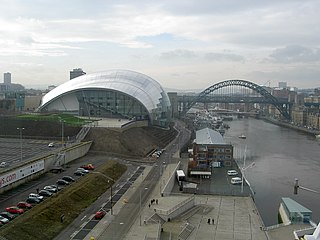Related Research Articles
Fifteen ships of the Royal Navy have been named HMS Enterprise while another was planned:
Three ships and three shore establishments of the Royal Navy have been named HMS Ceres, after the goddess Ceres of Roman mythology.
Five ships and one shore establishment of the Royal Navy have been named HMS President, after the office of president meaning "one who presides over an assembly". In the case of the first two British ships, the name may have applied to the Lord President of the Privy Council.

The C class was a group of twenty-eight light cruisers of the Royal Navy, and were built in a sequence of seven groups known as the Caroline class, the Calliope class, the Cambrian class, the Centaur class, the Caledon class, the Ceres class and the Carlisle class. They were built for the rough conditions of the North Sea, and proved to be rugged and capable vessels, despite being somewhat small and cramped.
Twelve ships and two shore establishments of the Royal Navy have been named HMS Defiance. Others have borne the name whilst serving as depot ships and tenders to the establishments:
Six ships and a naval station of the Royal Navy have been called HMS Tamar, after the River Tamar in South West England:
Nineteen ships and a shore establishment of the Royal Navy have been named HMS Drake after Sir Francis Drake or after the drake:

HMS President (1918) is a retired Flower-class Q-ship that was launched in 1918. She was renamed HMS President in 1922 and moored permanently on the Thames as a Royal Navy Reserve drill ship. In 1982 she was sold to private owners and, having changed hands twice, served as a venue for conferences and functions as well as the offices for a number of media companies. She has been moved to Chatham on the Medway in Kent since 2016, but is due to return to the capital. She had the suffix "(1918)" added to her name in order to distinguish her from HMS President, the Royal Naval Reserve base in St Katharine Docks. She is one of the last three surviving Royal Navy warships of the First World War. She is also the sole representative of the first type of purpose built anti-submarine vessels, and is the ancestor of World War II convoy escort sloops, which evolved into modern anti-submarine frigates.
Five ships and a number of shore establishments of the Royal Navy have borne the name HMS Daedalus, after the mythical Daedalus:
Fifteen ships and two shore establishments of the Royal Navy have borne the name HMS Ferret, after the domestic mammal, the Ferret:
Nine ships of the Royal Navy have borne the name HMS Falmouth, after the town of Falmouth:

Eighteen ships of the Royal Navy have borne the name HMS Mercury, or HMS Mercure, after the God Mercury, of Roman mythology:

HMS Calliope was a Calypso-class corvette of the Royal Navy of the United Kingdom which served from 1887 until 1951. Exemplifying the transitional nature of the late Victorian navy, Calliope was a sailing corvette—the last such ship built for the Royal Navy—but supplemented the full sail rig with a powerful engine. Steel was used for the hull, and like the earlier iron-hulled corvettes, Calliope was cased with timber and coppered below the waterline, in the same manner as wooden ships.

HMS Calliope is a training centre and 'stone frigate' of the Royal Naval Reserve, located in Gateshead, Tyne and Wear.
Eleven ships of the Royal Navy have borne the name HMS Star or HMS Starr:
Eleven ships and a shore establishment of the Royal Navy have borne the name HMS Cormorant, after the seabird, the cormorant:
Eight ships of the Royal Navy have borne the name HMS Satellite:

The Calypso class comprised two steam corvettes of the Royal Navy. Built for distant cruising in the heyday of the British Empire, they served with the fleet until the early twentieth century, when they became training ships. Remnants of both survive, after a fashion; HMS Calliope in the name of the naval reserve unit the ship once served, and HMS Calypso both in the name of a civilian charity and the more corporeal form of the hull, now awash in a cove off Newfoundland.
Nine ships of the Royal Navy have borne the name HMS Dart, after the River Dart in Devon:
References
- Colledge, J. J.; Warlow, Ben (2006) [1969]. Ships of the Royal Navy: The Complete Record of all Fighting Ships of the Royal Navy (Rev. ed.). London: Chatham Publishing. ISBN 978-1-86176-281-8.
- HMS Calliope from the Royal Navy website.